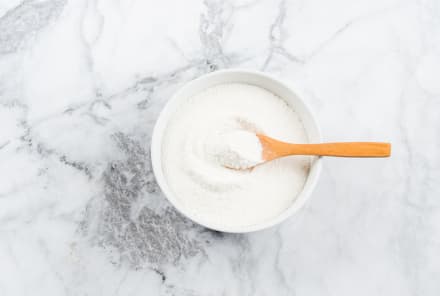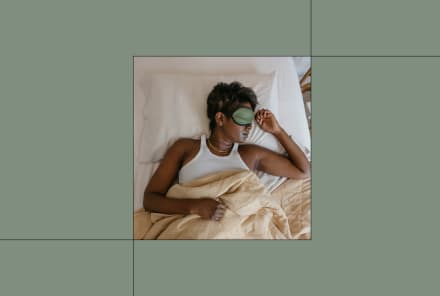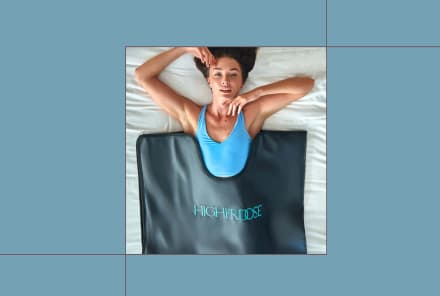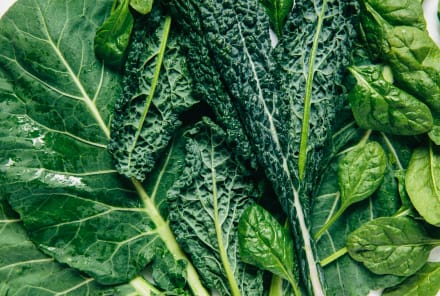Advertisement
How To Get Your Vitamin D With & Without Sun (And Why It's Important)


Seeing as how vitamin D is well tolerated by nearly everybody, it's certainly worth the effort to make sure yours is within a healthy range.
The vitamin D that our skin makes must be converted by the liver to 25(OH) D3, which is what is usually measured when you get your vitamin D levels tested by a doctor. Then it's converted by the kidneys to calcitriol, which is the active hormone form of the vitamin.
Unbeknownst to many, the enzymes that perform both of these conversions rely on magnesium. Unfortunately, 50% of Americans do not consume adequate magnesium, which could lead to vitamin D staying stored and inactive for a huge proportion of people. Thankfully, magnesium is found in foods like dark leafy greens, almonds, pumpkin seeds, full-fat dairy yogurt, and dark chocolate. I also provide a full list and explanation of other vitamin-rich foods in my book, The Genius Life.
How to get your vitamin D—with and without sun.
The sun's daily cycle isn't the only rhythm we've adapted to; we've been honed by an annual rhythm as well. During the summer months, when the sun's UVB rays are easily able to reach your skin, vitamin D production is easy. But summer doesn't last forever, and depending on your latitude, winter may mean months without direct access to vitamin-D-producing rays.
How, then, did our ancestors make it through the dark winter months without risking severe deficiency?
Thankfully, vitamin D gets stored in our bodies' fat tissue to protect us against natural seasonal variability. This also occurs with the other fat-soluble vitamins: A, E, and K. But similar to how storing fat was key to the survival of an early human and today facilitates the obesity crisis, our ability to store vitamin D has become a double-edged sword.
Vitamin D can get sequestered by fat tissue, making those who are overweight risk deficiency 1even with regular sun exposure1. This also means that if you are overweight and supplementing with vitamin D, you may need two to three times what a lean person requires2 to achieve healthy vitamin D levels. Just be mindful of burning, which can lead to unnecessary DNA damage.
Skin color also matters when it comes to vitamin D production. Those with darker complexions have more melanin in their skin. Melanin is nature's sunscreen, and while you may enjoy reduced skin aging, it also makes you more prone to vitamin D insufficiency (deficiency rates3 shoot up to 82% for African Americans and 70% for Hispanics, almost double the national average). In the summer, 10 minutes of exposure for someone with fair skin may be sufficient, but someone with a darker complexion may need up to two hours.
Our body's ability to create vitamin D also diminishes with age, to the degree that a 77-year-old person's skin creates half the vitamin D of an 18-year-old's skin. given the same amount of time in the sun. On top of that, our kidneys, which normally "activate" vitamin D, falter over time in their ability to do so4. The take-away here is that as you age, your needs for sun exposure (or supplementation) increase.
So what's the best way to get vitamin D?
The sun is the ideal way to boost vitamin D because its light, beyond supporting the natural pathways that create vitamin D, provides other benefits like nitric oxide production and setting your internal clock. There's also no risk of "over supplementing" since your skin will synthesize as much vitamin D as is needed and degrade any extra5.
Nevertheless, if you choose to supplement, opt for vitamin D3, which is identical to what we create in our skin. Just remember, eating well comes first: No supplement will fix a poor diet or lifestyle!
Watch Next
Enjoy some of our favorite clips from classes
Enjoy some of our favorite clips from classes
What Is Meditation?
Mindfulness/Spirituality | Light Watkins
Box Breathing
Mindfulness/Spirituality | Gwen Dittmar
What Breathwork Can Address
Mindfulness/Spirituality | Gwen Dittmar
The 8 Limbs of Yoga - What is Asana?
Yoga | Caley Alyssa
Two Standing Postures to Open Up Tight Hips
Yoga | Caley Alyssa
How Plants Can Optimize Athletic Performance
Nutrition | Rich Roll
What to Eat Before a Workout
Nutrition | Rich Roll
How Ayurveda Helps Us Navigate Modern Life
Nutrition | Sahara Rose
Messages About Love & Relationships
Love & Relationships | Esther Perel
Love Languages
Love & Relationships | Esther Perel
What Is Meditation?
Box Breathing
What Breathwork Can Address
The 8 Limbs of Yoga - What is Asana?
Two Standing Postures to Open Up Tight Hips
How Plants Can Optimize Athletic Performance
What to Eat Before a Workout
How Ayurveda Helps Us Navigate Modern Life
Messages About Love & Relationships
Love Languages
Advertisement

This Little-Known Supplement Helps Women Sleep & Decreases Signs Of Depression
Molly Knudsen, M.S., RDN

Want To Be Metabolically Healthy? New Study Shows An Underutilized Approach
Molly Knudsen, M.S., RDN

This Little-Known Supplement Helps Women Sleep & Decreases Signs Of Depression
Molly Knudsen, M.S., RDN














